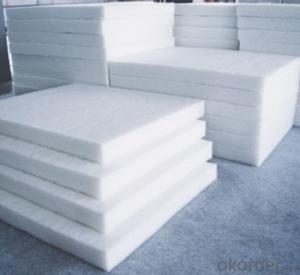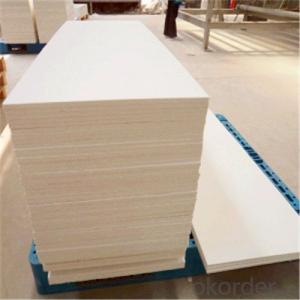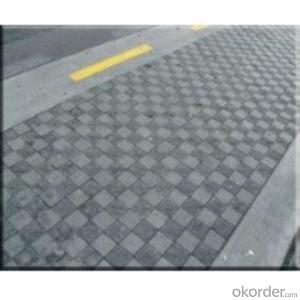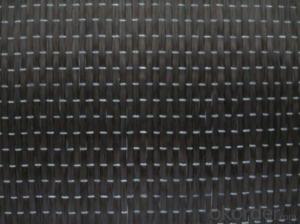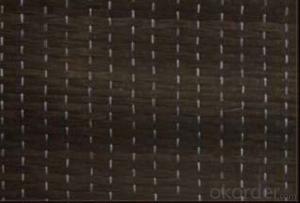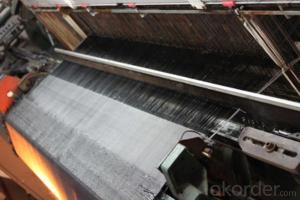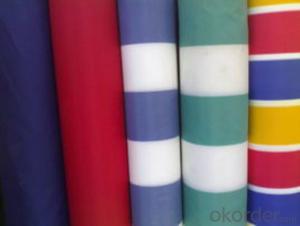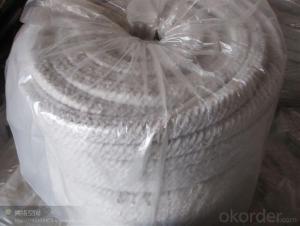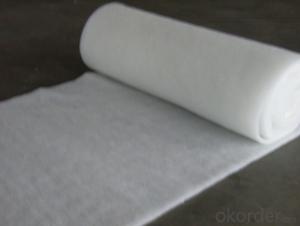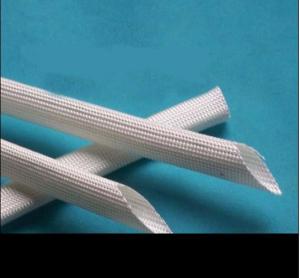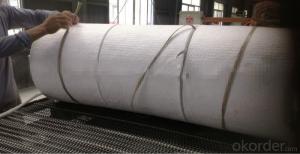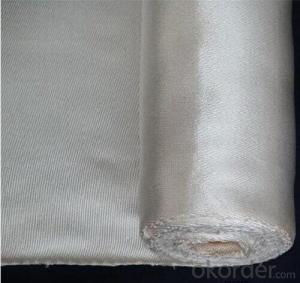High temperature ceramic fiber refractory fabric for heat insulation
- Loading Port:
- Shanghai
- Payment Terms:
- TT OR LC
- Min Order Qty:
- 1 m.t.
- Supply Capability:
- 111 m.t./month
OKorder Service Pledge
OKorder Financial Service
You Might Also Like
Specifications
1.Ceramic fiber cloth
2.1260C
3.thickness:1-5mm
4.reasonable price
High temperature ceramic fiber refractory fabric for heat insulation
Specifications:
Temperature:450C-1260C
Thickness:1.5mm-6.0mm
Width:500mm-1200mm
Density:500kg+/-30kg/m
Reinforcing materials: glass fiber wire, stainless steel wire
1. Products Details:
Hitex Ceramic Fiber Cloth is a woven fabric made from our high quality ceramic fiber woven yarn. The cloth is reinforced with fiberglass filament, or optional Inconel/alloy steel wire reinforcement. It is featured with heat insulation and high temperature protective materials in all kind of thermal installations and heat-conducting systems, widely used in welding, foundry works, aluminum and steel mills, boiler insulation and seal, shipyards, refineries, power plants and chemical plants.
2. Product Advantages:
1.Resistance to high temperature and chemical erosion
2.High mechanical strength
3.Low thermal conductivity
4.Low thermal storage
5.Resistance to heat shock
6.Easy installation
3. Technical Data:
Item | Ceramic Fiber Cloth | |
Classification Temperature | 1260C | 1260C |
Work Temperature | 450C | 1000C |
Basic Material | Fiberglass Reinforced | Stainless Steel Reinforced |
Theoretical Density ( kg/ m3) | 500±15 | |
Moisture Content (%) | ≤2 | |
Warp Density | 48~60 Piece/10cm | |
Weft Density | 21~30 Piece/10cm | |
Organic Content (%) | ≤15 | |
Specification (mm) | L:30,000mm / W:1,000mm / T:2~3mm | |
Packing | Plastic bag inside, woven bag outside | |
- Q:Can glass fiber textiles be used for bulletproof applications?
- Glass fiber textiles, known as fiberglass, possess the capability to serve bulletproof purposes. Renowned for their exceptional durability and impact resistance, these textiles prove suitable for incorporation into bulletproof vests, helmets, and other protective gear. Through the weaving process, glass fibers intertwine, forming a robust and flexible fabric that adeptly absorbs and disperses bullet energy, thereby mitigating the likelihood of penetration. Furthermore, the ballistic resistance of glass fiber textiles can be heightened by combining them with supplementary materials like Kevlar or carbon fiber. Nevertheless, it is crucial to acknowledge that the efficacy of bulletproof applications hinges upon a multitude of factors, encompassing material thickness and layering, as well as bullet type and velocity.
- Q:Can glass fiber textile be used in high-temperature applications?
- Glass fiber textile is capable of being utilized in high-temperature scenarios. Its exceptional thermal resistance attributes render it suitable for deployment in environments with elevated temperatures. It can endure temperatures of up to 1000°C (1832°F) without compromising its structural integrity or mechanical properties. This renders it an optimal choice for applications including insulation blankets, gaskets, seals, and protective clothing in industries like aerospace, automotive, and industrial manufacturing, where elevated temperatures are prevalent. Moreover, glass fiber textile is renowned for its low thermal conductivity, which aids in minimizing heat transfer and enhancing energy efficiency in diverse high-temperature applications. In summary, glass fiber textile is a dependable and efficient material option for high-temperature environments.
- Q:How do glass fiber textiles contribute to water repellency?
- Glass fiber textiles contribute to water repellency due to their inherent properties. The smooth and non-absorbent surface of glass fibers prevents water from being absorbed into the fabric, causing it to bead up and roll off instead. Additionally, the tightly woven structure of glass fiber textiles minimizes the size of the gaps between fibers, reducing the chances of water seeping through. These characteristics make glass fiber textiles effective in providing water repellency and keeping the wearer dry.
- Q:Can glass fiber textiles be used in shipbuilding?
- Glass fiber textiles, otherwise referred to as fiberglass, find extensive use in shipbuilding owing to their remarkable mechanical properties, lasting performance, and resistance to corrosion. These textiles are frequently employed in the fabrication of ship hulls, decks, and other structural elements, as they possess a high strength-to-weight ratio and are lightweight yet sturdy. This makes them particularly suitable for marine applications where the reduction of weight is of paramount importance. Moreover, the corrosion resistance exhibited by glass fiber textiles serves to safeguard the ship against the harsh saltwater environment. All in all, owing to their exceptional mechanical properties and enduring performance, glass fiber textiles have become a favored choice in the realm of shipbuilding.
- Q:Can glass fiber textiles be used in insulation boards?
- Yes, glass fiber textiles can be used in insulation boards. Glass fiber textiles are commonly used in insulation boards due to their excellent thermal and acoustic insulation properties. They are lightweight, flexible, and resistant to moisture, making them suitable for various applications in construction and industrial settings.
- Q:Can glass fiber textiles be used in reinforcement of synthetic fibers?
- Yes, glass fiber textiles can be used in the reinforcement of synthetic fibers. Glass fibers are known for their high strength and stiffness, making them an ideal material for reinforcing synthetic fibers such as nylon, polyester, or polypropylene. The combination of glass fiber textiles with synthetic fibers enhances the overall strength and durability of the resulting composite material.
- Q:Can glass fiber textiles be used for geotextiles?
- Yes, glass fiber textiles can be used for geotextiles. Glass fiber has high tensile strength, durability, and resistance to chemicals, making it suitable for various geotechnical applications such as soil stabilization, erosion control, and reinforcement of soil structures.
- Q:What are the advantages of using glass fiber textiles in construction?
- Glass fiber textiles offer several advantages in construction. Firstly, they are lightweight yet strong, making them ideal for applications where a lightweight material is desired without compromising on durability. Additionally, glass fiber textiles have excellent resistance to corrosion, chemicals, and UV radiation, ensuring a longer lifespan for the construction project. They also provide good thermal and acoustic insulation properties, enhancing the energy efficiency and comfort of the building. Furthermore, glass fiber textiles are highly versatile and can be easily molded into various shapes, allowing for creative and innovative designs in construction. Lastly, they are fire-resistant, providing an added safety feature to the structure. Overall, the use of glass fiber textiles in construction offers numerous benefits, making it a preferred material in the industry.
- Q:How does glass fiber textile perform in terms of moldability?
- Glass fiber textile excels in its ability to be molded. Its distinctive characteristics and arrangement enable effortless molding into intricate shapes. The interwoven glass fibers form a resilient and supple textile, which can be shaped into diverse designs and arrangements. Consequently, it serves as an optimal material for numerous applications, including automotive components, boat hulls, and architectural structures. Furthermore, the moldability and strength of glass fiber textile can be further enhanced by combining it with other substances, such as resins. In conclusion, glass fiber textile is exceedingly adaptable, offering exceptional versatility in terms of shaping and forming.
- Q:Can glass fiber textiles be used in reinforcement of 3D printed parts?
- Yes, glass fiber textiles can be used as a reinforcement material for 3D printed parts. The addition of glass fibers enhances the mechanical properties of the printed parts, such as strength and stiffness, making them more suitable for demanding applications.
1. Manufacturer Overview |
|
|---|---|
| Location | |
| Year Established | |
| Annual Output Value | |
| Main Markets | |
| Company Certifications | |
2. Manufacturer Certificates |
|
|---|---|
| a) Certification Name | |
| Range | |
| Reference | |
| Validity Period | |
3. Manufacturer Capability |
|
|---|---|
| a)Trade Capacity | |
| Nearest Port | |
| Export Percentage | |
| No.of Employees in Trade Department | |
| Language Spoken: | |
| b)Factory Information | |
| Factory Size: | |
| No. of Production Lines | |
| Contract Manufacturing | |
| Product Price Range | |
Send your message to us
High temperature ceramic fiber refractory fabric for heat insulation
- Loading Port:
- Shanghai
- Payment Terms:
- TT OR LC
- Min Order Qty:
- 1 m.t.
- Supply Capability:
- 111 m.t./month
OKorder Service Pledge
OKorder Financial Service
Similar products
New products
Hot products
Hot Searches
Related keywords
